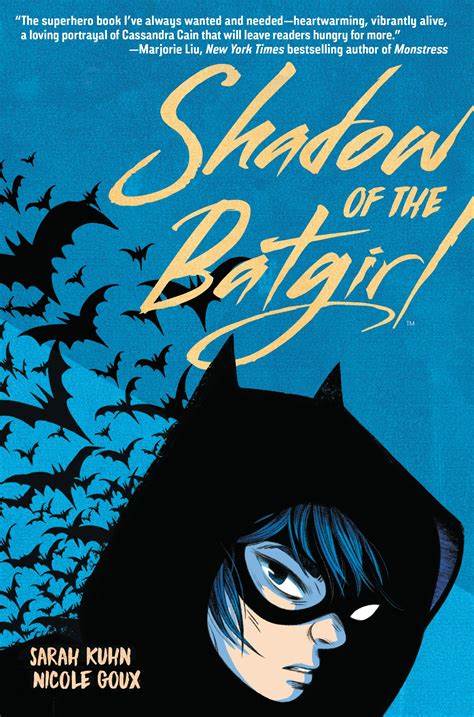Comic Book Review: Shadow of the Batgirl author Sarah Kuhn, Illustrator Nicole Goux
Cassandra Cain was raised to be the perfect assassin, able to read people’s movements and respond with deadly precision, silent and able to blend into the shadows until time to strike. But her latest victim lived just long enough to say something. Cassandra didn’t understand most of it–killing machines don’t need words–but she recognized “daughter.” Said in a way her father never had. Suddenly able to understand that her action had caused pain, Cassandra fled.

Living rough on the street, Cassandra is found by Jackie Yoneyama, a restaurant owner, who recognizes someone who needs feeding. The city is noisy and confusing, and Cassandra keeps flashing back to her assassin training at awkward moments. She finally finds a quiet place, the library. There’s a deserted nook where she can sleep, and she can lurk in the stacks while learning about the outside world.
Cassandra listens in on the young writers’ classes taught by Barbara Gordon, a young-looking woman who uses a wheelchair to get around. Cassandra is inspired by Barbara’s tales of Batgirl, Gotham City’s once hero who vanished a while back. She also meets and forms a connection with shelving volunteer Erik.
As Cassandra slowly learns to speak and read, she reaches out to Barbara to learn more about Batgirl, and the concept of heroism. But she’s still haunted by her past, and her father David Cain, who is an evil man who has most definitely not given up on having her as his pet assassin. Can she ever be anything but a villain?
This young adult graphic novel is an alternate version of the second Batgirl, Cassandra Cain. The character was introduced in 1999 as a trademark replacement for the Barbara Gordon version of Batgirl, who’d been crippled and taken on the identity of Oracle. At the time, there were very few Asian-American female superheroes in the DC stable, and her struggles with language gave her an interesting progression as she learned and grew.
However, the editorial direction at DC Comics changed, and there was a major change in her character from hero to villain which many fans felt was a betrayal, and part of a narrative that evil was “in the blood.” There were stabs at correcting course, but for the most part creators didn’t seem to know what to do with her, or editorial vetoed promising new directions.
Over time, the Cassandra Cain Batgirl has returned to a decent portrayal, and she’s now appearing in a series called Batgirls along with other bearers of the title.
This story clears away most of the extra elements (Batman isn’t even mentioned!) to give Cassandra her own story of learning, growing, and eventually making her own decisions about who she wants to be. Jackie appears to be a new character in this version to act as the older, wiser character that mostly has her life together and can be Cassandra’s “Alfred” while Barbara is her direct mentor.
The art suits the story well, with the library providing an excellent background to many scenes, and good use of multiple images in the same panel to show movement. The library also acts as a thematic element, a place of knowledge that requires work to maintain, and protection. (And Barbara Gordon started as a librarian back in the Silver Age.)
Content note: Cassandra is abused by her father, both physically and emotionally, as he considers her more property than person. She has killed in the past, and blood is seen a few times. There’s reference to ethnic stereotypes. This should be okay for junior high readers on up.
Overall: This is a good version of Cass Cain’s story, more accessible than much of her mainstream comics appearances. Recommended to younger superhero fans.

